Craquelure is an artificial aging of the surface. It belongs to mixed media, that is, it can be used both in combination with other design methods, and independently. It is used when decorating furniture, creating decorative interior items, decorations, and so on. To master this technique is not as difficult as it seems - the main thing is to follow the instructions for use and know the features of the types of craquelure varnishes.
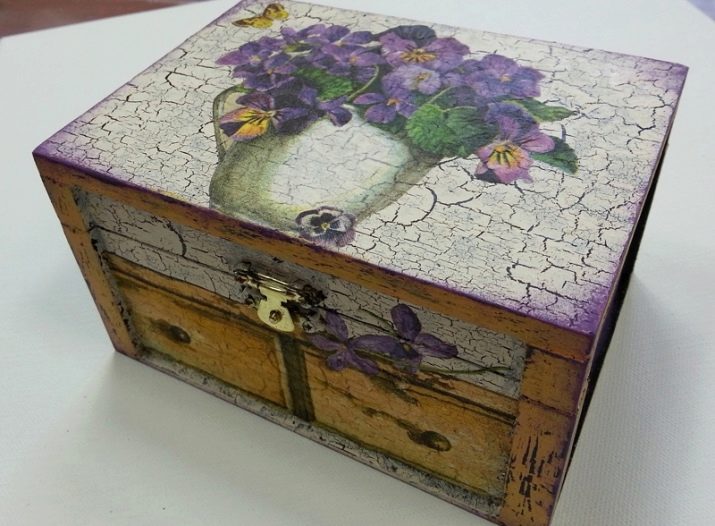
Varieties
Modern manufacturers offer 2 types - one-step craquelure and two-step. The first of them is well suited for beginners due to the ease of application. The surface treated with this varnish resembles an enamel cracked from time to time. From under the surface of the varnish peels a layer of acrylic paint - the base.
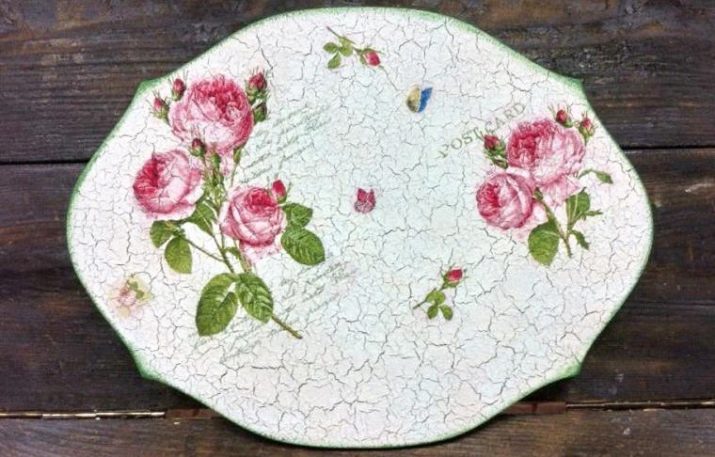
Two-step craquelure varnish is more difficult to use, but it also gives the effect another - more beautiful, aesthetic, natural. Due to the fact that in this case the varnish itself cracks, it does not overlap the previous layer (for example, some kind of picture, image), and it can be used to finish a wide variety of surfaces.
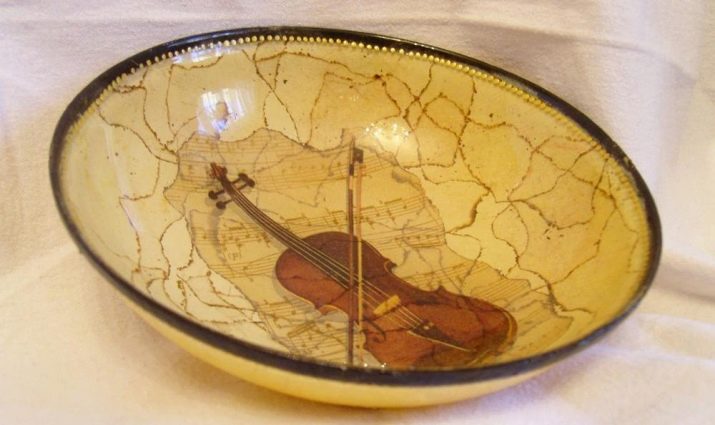
Both types are used in decoupage. It all depends on the degree of skill of the decorator, his ability to work with this material. Craquelure does not differ in increased complexity, but still requires certain skills.
In this case, the type of varnish does not play a particularly important role. Someone thinks that a two-step craquelure is more complicated; for someone, working with a one-step crash is difficult.
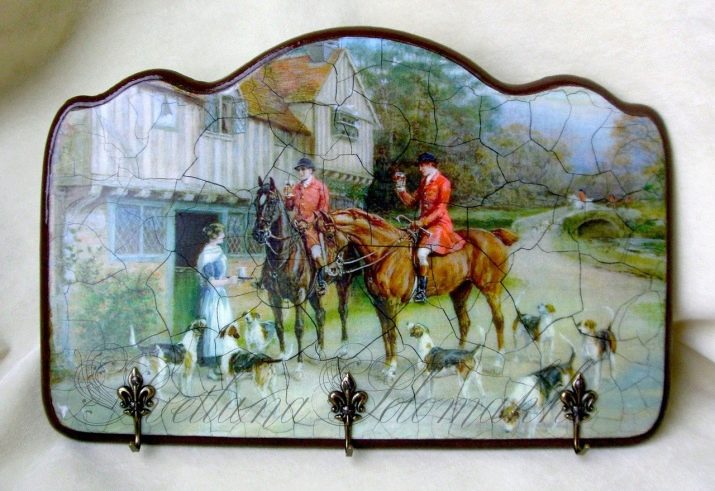
How to apply?
As with any other decorative means, working with craquelure requires compliance with certain rules regarding surface preparation and the sequence of applying layers. For each type of varnish they are different.
One step
So, in order to use the one-step craquelure correctly, it is necessary to adhere to the desired sequence.
- Primer the surface to be decorated.
- After the primer has dried, apply a layer of acrylic paint (base).
- The painted surface is varnished (1 coat).
- Until the varnish is completely dry - apply a second coat of paint.
- You can apply a napkin with the desired pattern on top. To do this, separate the two lower layers, the top - with a picture - put on a file. Then coat with glue, apply to the surface, smooth. At the end, carefully remove the file so that the picture remains unharmed.
- The final stage is the application of a simple varnish, for example, acrylic. It can be matte, glossy, transparent - any, depending on the preferences of the master.
If the sequence of using this type of craquelure is depicted in the form of a diagram, you get a kind of “pie” - primer, paint, varnish, paint, picture, acrylic varnish.

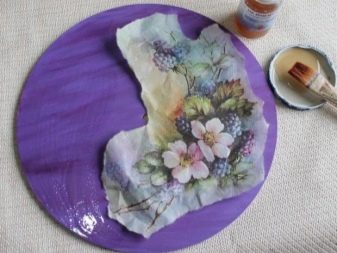
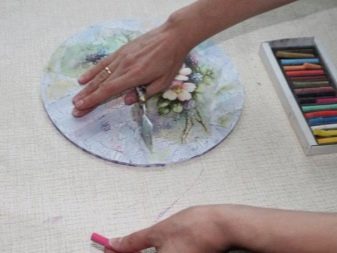

Two-step
Using a two-step view will require more time and effort.
- First of all, the decorated surface must be covered with shellac in 2-3 layers. Each subsequent layer is applied only after the previous one dries.
- The next step is to apply the craquelure itself.
- As soon as the varnish dries, the cracks need to be wiped. To do this, use oil paint, pastel or something else.
- Next, an image is applied.
- Finally, the entire surface is covered with a layer of shellac to consolidate the result.
What is good about a two-step craquelure is that it can be applied to a pre-prepared, glued image. It will create the effect of antiquity without blocking the picture itself.
At the same time, it is necessary that the workpiece on which the craquelure will be applied be completely finished, with a pattern applied and varnished (in several layers).
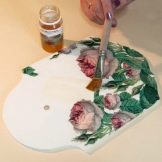
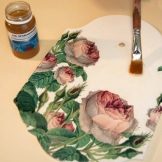
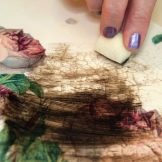
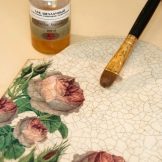
The kit for two-phase craquelure includes 2 products - the first and second layer. They are applied alternately.
But before you start applying the second composition, you need to slightly dry the layer of the first agent.
After both compositions have dried and cracks appear, you can proceed to the next stages of work.
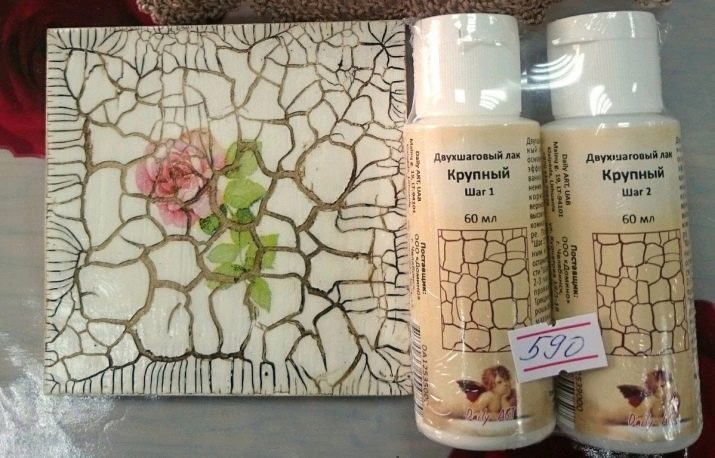
Application of paint also requires compliance with certain rules. No need to apply paint 2 times to the same place - you may get an uneven coating.
In addition, it is important that the second layer of paint from the first time lay evenly, completely covering the first. This is necessary so that the result is a uniform, beautiful coating, without “bald spots” and layer mixing.
You need to pay attention to the consistency of the paint - it should not be very liquid, but not thick either.
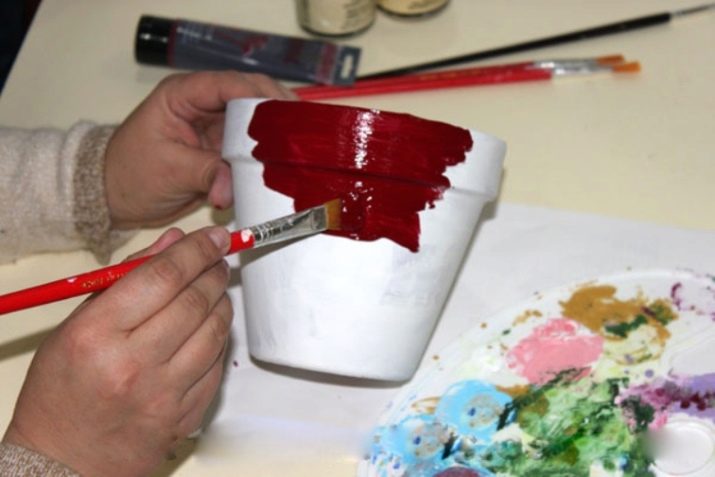
To make the cracks thin and long - paint is applied in a thin layer with a brush. Small, crack-like cracks are obtained when applying paint with a sponge. In general, a number of factors influence how the varnish cracks.
- the composition of the craquelure itself;
- how thick the varnish is applied;
- how well it dried out;
- the thickness of the paint, the thickness and application of the first layer also matters.
It is important to choose the right type of paint. Some of them - for example, metallic - do not crack at all. And in general, compositions with a very high density are quite difficult to “make” crack.
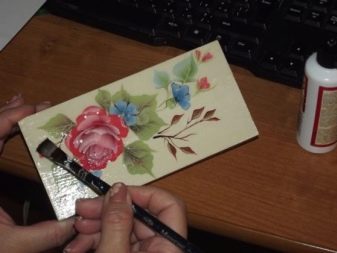
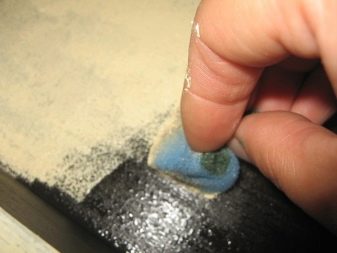
Dry the product in natural conditions in rooms with low or medium humidity.
In addition, it is advisable to keep a kind of "diary", which records the following indicators:
- how thick and in how many layers the first layer is applied;
- how long does it take to dry the varnish;
- in what conditions it passes;
- which craquelure varnish was used;
- the result obtained.
These records will allow not only to choose the optimal composition of craquelure and working conditions, but also will help to obtain the desired result in the future - simply by “playing” with the layer thickness, drying time and other characteristics.
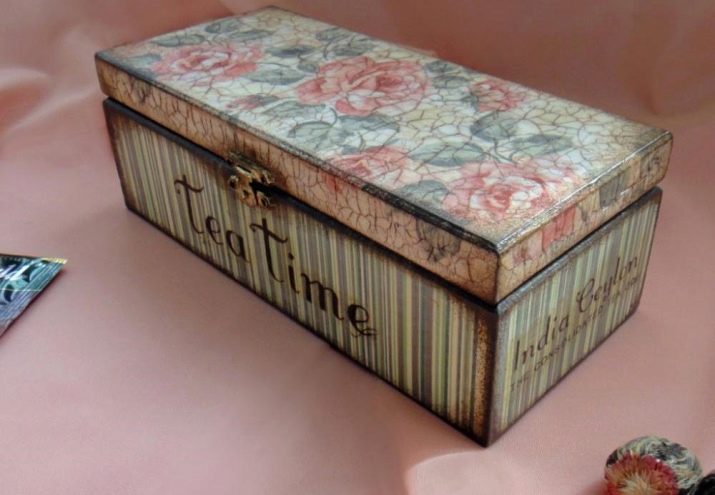
Workshop for beginners
To better understand the principle of working with craquelure, you need to put it into practice. A master class on creating a cup for brushes and pencils will help well in this. In addition to craquelure, decoupage on wood is used here - it is a work in mixed media. It clearly shows how and in what sequence it is necessary to use craquelure varnish.
- So, first of all, the surface of the cup is peeled and primed in 1-2 layers. When applying the soil, a flat synthetic brush is used. Each layer should be allowed to dry for half an hour.

- Next, acrylic paint is applied. Its color depends on the shade of the crack.
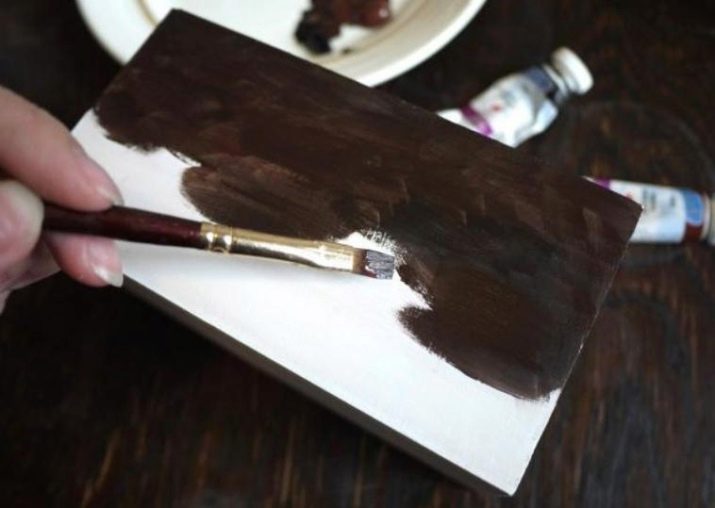
- The next step is to apply a one-step craquelure with a thick brush made of synthetic material. The instructions for the composition will help to do everything correctly. The varnish should dry for 10-30 minutes.
The thickness of the varnish layer will determine how small the cracks will be.
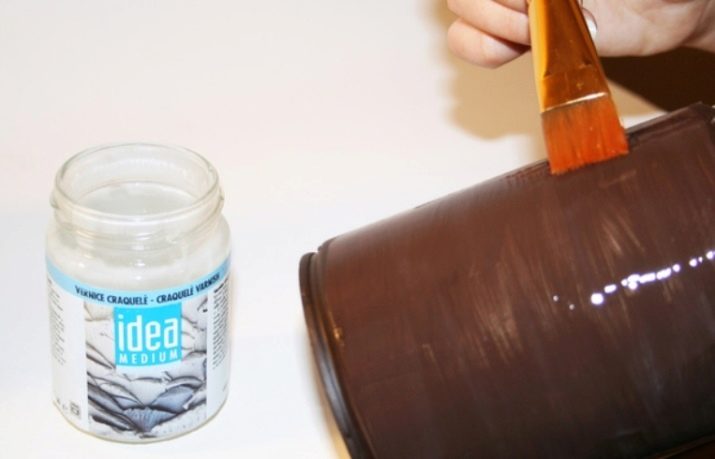
- Matte acrylic paint is applied to the varnish. Here you can use both a brush - then the cracks will have a more geometric shape, and a sponge - in this case, cracking will look more natural.
For the second layer, it is better to choose a paint from a foreign manufacturer - it has a higher density.
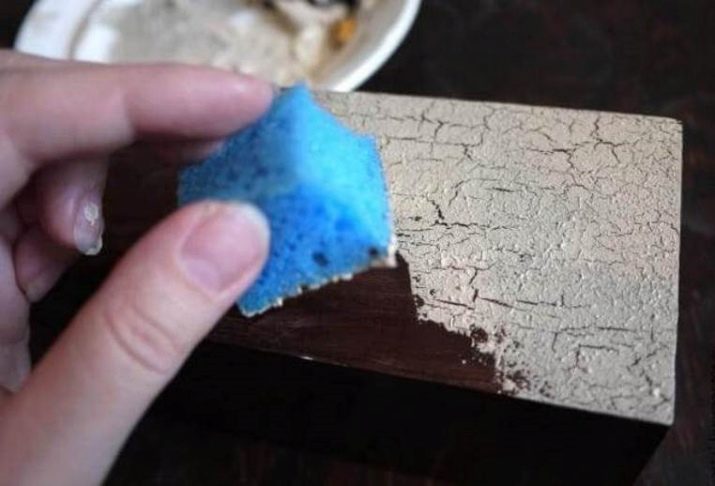
- As soon as the acrylic dries, you can begin to decoupage. Since the paint layer will serve as the background on which the picture is placed, it is better if its hue is light or, in general, white. This will make the picture stand out more clearly.
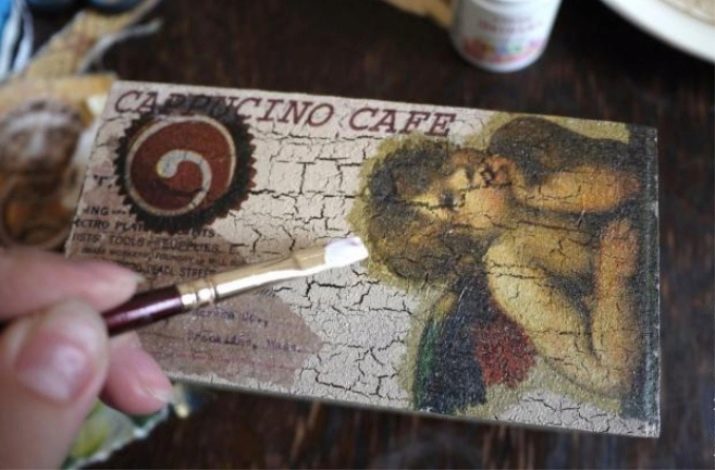
- The side faces of the cup are shaded with dark brown paint, which is applied with light movements with a sponge.
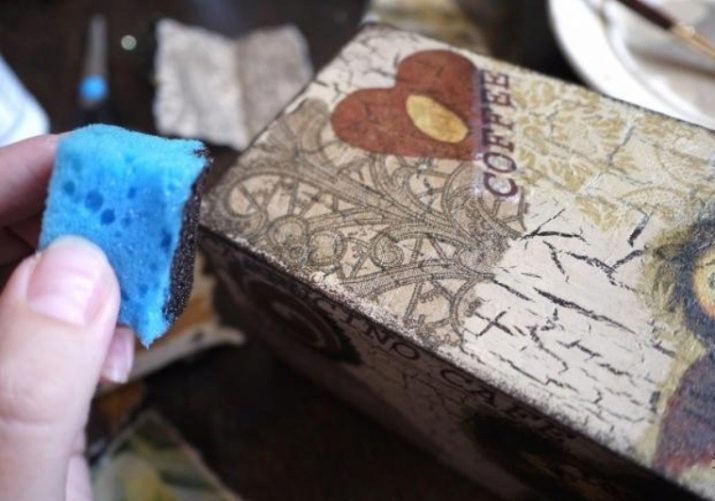
- The final stage will be coating the entire product with acrylic varnish.
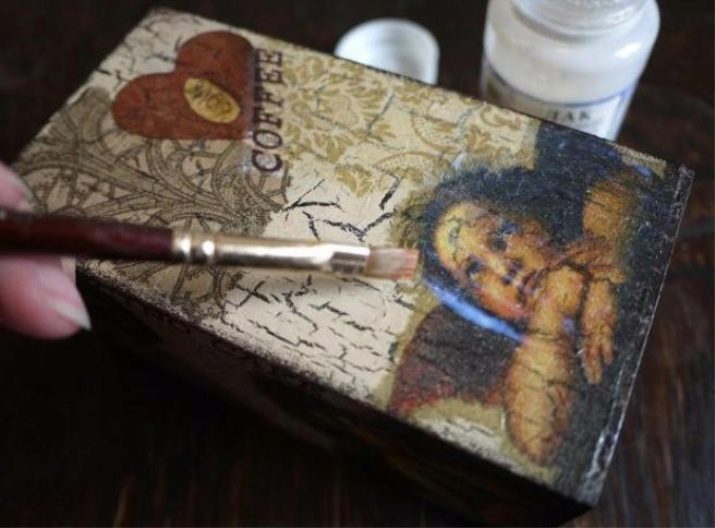
The use of craquelure varnish gives the product a touch of casual luxury, which is inherent in all antiquities. Of course, it requires some skill, but the result is worth it. No need to be afraid of this technique - you can master everything, the main thing is desire. It allows you to achieve excellent results with little time and effort.
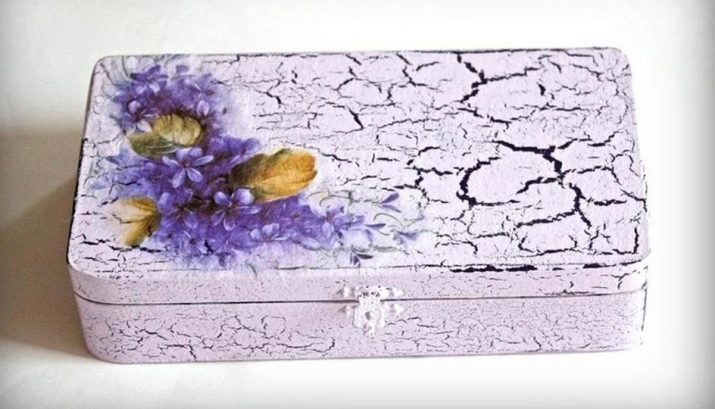
The technique of performing a two-step craquelure can be found in the next video.










